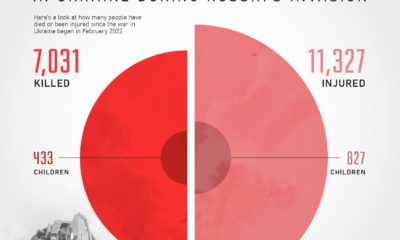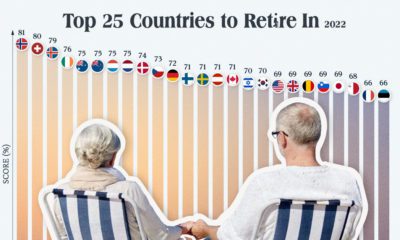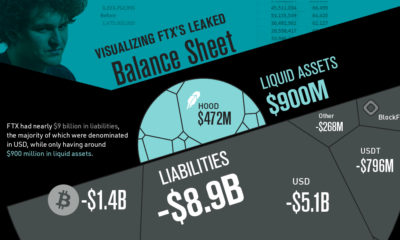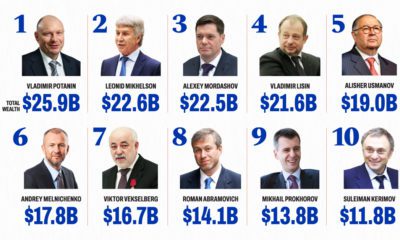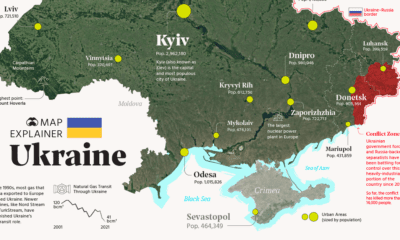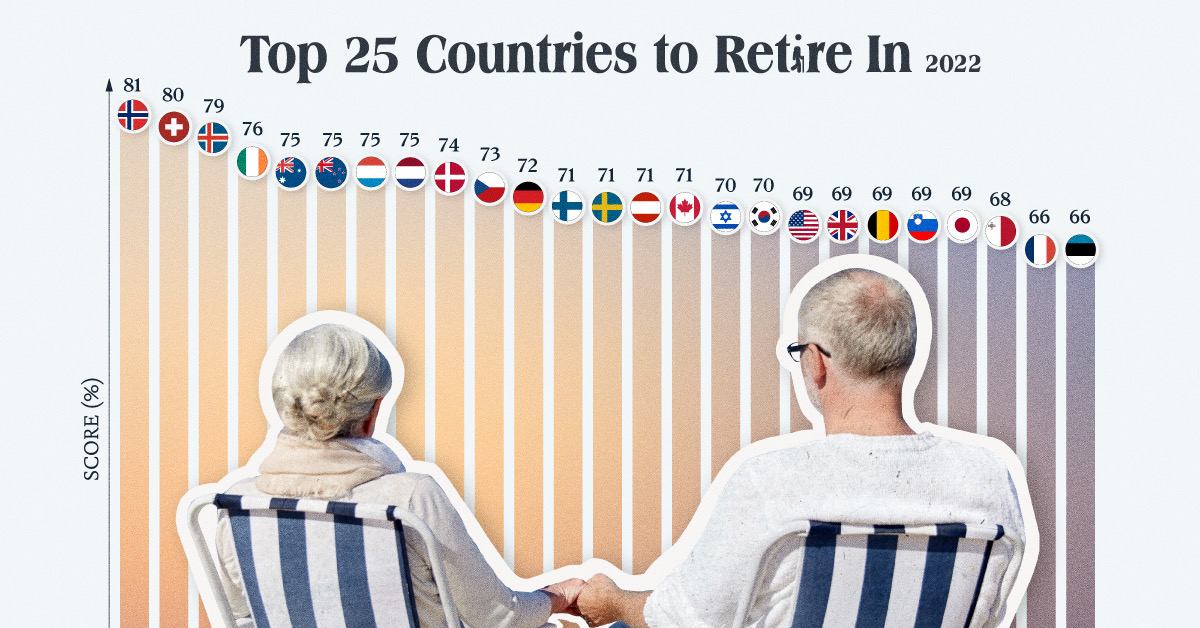Despite economic uncertainty, pension funds saw relatively strong growth in 2021. The world’s 100 biggest pension funds are worth over $17 trillion in total, an increase of 8.5% over the previous year. This graphic uses data from the Thinking Ahead Institute to rank the world’s biggest pension funds, and where they are located.
What is a Pension Fund?
A pension fund is a fund that is designed to provide retirement income. This ranking covers four different types:
Sovereign funds: Funds controlled directly by the state. This ranking only includes sovereign funds that are established by national authorities. Public sector funds: Funds that cover public sector workers, such as government employees and teachers, in provincial or state sponsored plans. Private independent funds: Funds controlled by private sector organizations that are authorized to manage pension plans from different employers. Corporate funds: Funds that cover workers in company sponsored pension plans.
Among the largest funds, public sector funds are the most common.
The Largest Pension Funds, Ranked
Here are the top 100 pension funds, organized from largest to smallest. U.S. fund data are as of Sep. 30, 2021, and non-U.S. fund data are as of Dec. 31, 2021. There are some exceptions as noted in the graphic footnotes.
Japan’s Government Pension Investment Fund (GPIF) is the largest in the ranking for the 21st year in a row. For a time, the fund was the largest holder of domestic stocks in Japan, though the Bank of Japan has since taken that title. Given its enormous size, investors closely follow the GPIF’s actions. For instance, the fund made headlines for deciding to start investing in startups, because the move could entice other pensions to make similar investments. America is home to 47 funds on the list, including the largest public sector fund: the Thrift Savings Plan (TSP), overseen by the Federal Retirement Thrift Investment Board. Because of its large financial influence, both political parties have been accused of using it as a political tool. Democrats have pushed to divest assets in fossil fuel companies, while Republicans have proposed blocking investment in Chinese-owned companies. Russia’s National Wealth Fund comes in at number 19 on the list. The fund is designed to support the public pension system and help balance the budget as needed. With Russia’s economy facing difficulties amid the Russia-Ukraine conflict, the government has also used it as a rainy day fund. For instance, Russia has set aside $23 billion from the fund to replace foreign aircraft with domestic models, because Western sanctions have made it difficult to source replacement parts for foreign planes.
The Future of Pension Funds
The biggest pension funds can have a large influence in the market because of their size. Of course, they are also responsible for providing retirement income to millions of people. Pension funds face a variety of challenges in order to reach their goals:
Geopolitical conflict creates volatility and uncertainty High inflation and low interest rates (relative to long-term averages) limit return potential Aging populations mean more withdrawals and less fund contributions
Some pension funds are turning to alternative assets, such as private equity, in pursuit of more diversification and higher returns. Of course, these investments can also carry more risk. Ontario Teachers’ Pension Plan, number 18 on the list, invested $95 million in the now-bankrupt cryptocurrency exchange FTX. The plan made the investment through its venture growth platform, to “gain small-scale exposure to an emerging area in the financial technology sector.” In this case, the investment’s failure is expected to have a minimal impact given it only made up 0.05% of the plan’s net assets. However, it does highlight the challenges pension funds face to generate sufficient returns in a variety of macroeconomic environments. on While some countries are relatively prepared to handle this increase in the elderly demographic, others are already feeling the squeeze and struggling with the challenges that come with a rapidly aging population. Which countries are the best equipped to support their senior citizens? This graphic uses data from the 2022 Natixis Global Retirement Index to show the best countries to retire in around the world, based on several different factors that we’ll dig into below.
What Makes a Country Retirement-Friendly?
When people consider what makes a place an ideal retirement location, it’s natural to think about white sand beaches, hot climates, and endless sunny days. And, in truth, the right net worth opens up a world of opportunity of where to enjoy one’s golden years. The Global Retirement Index (GRI) examines retirement from different, more quantitative perspective. The annual report looks at 44 different countries and ranks them based on their retirement security. The index considers 18 factors, which are grouped into four overarching categories:
Health: Health spend per capita, life expectancy, and non-insured health spend. Quality of Life: Happiness levels, water and sanitation, air quality, other environmental factors, and biodiversity/habitat. Material Wellbeing: Income per capita, income equality, and employment levels. Finances in Retirement: Government debt, old-age dependency, interest rates, inflation, governance, tax pressure, and bank non-performing loans.
Using these 18 metrics, a score from 0.01 to 1 is determined for each country, which is then converted to a percentage. For a more detailed explanation of the report’s methodology, explore Appendix A (page 72) of the report.
The Top 25 Best Countries to Retire in
With an overall score of 81%, Norway comes in at number one as the most retirement-friendly country on the list. Norway is at the top of this year’s ranking for several reasons. For starters, it achieved the highest score in the Health category, largely because of its high average life expectancy, which is 83 years old, or 9 years longer than the global average. Norway also has the highest score of all the countries for Governance, a category gauged by assessing country corruption levels, political stability, and government effectiveness, and is in a three-way tie with Japan and Luxembourg in the Health category. Second on the list is another European country, Switzerland, with an overall score of 80%. It’s the highest-ranked country for environmental factors, and it also has the highest overall score in the Finances in Retirement category.
A Regional Breakdown
While European countries dominate the top 10 in the ranking, how does Europe rank as a region as a whole? Before diving in, it’s important to note that the study actually breaks up Europe into two sections: Eastern Europe (grouped with Central Asia) and Western Europe. And from a regional perspective, North America comes in first place despite the fact no countries in the region made it into the top 10. North America only has two countries included in the ranking: Canada (#15) and the U.S. (#18), which both rank relatively high. In contrast, Western and Eastern Europe have more countries to account for, which ultimately lowers their regional average.
The Future of Retirement
As longevity rises and the retirement aged population continues to increase worldwide, many countries are opting to change their pension policies in an effort to encourage people to stay in the workforce longer. For instance, in 2018, people in the UK could claim their State Pension once they turned 65. By 2028, this age requirement will be raised to 67. However, government intervention may not be necessary, as many people around the world are already staying in the workforce beyond the traditional retirement age (perhaps more out of necessity than choice).


